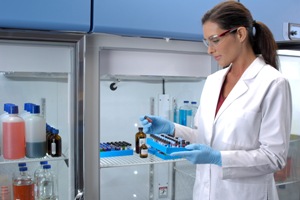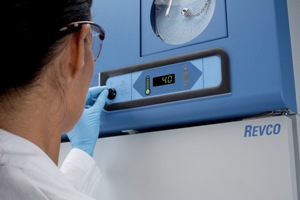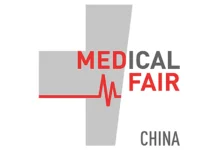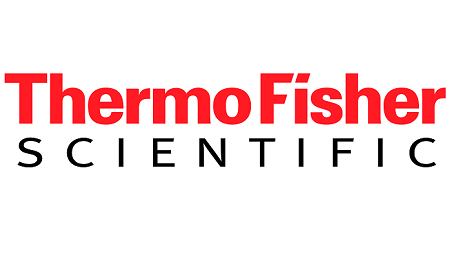Globally, inadequate refrigeration and poor storage conditions are the most common vaccine storage problems. Variations in temperature and failure to follow storage and monitoring requirements can drastically affect the effectiveness of vaccines and lead to unnecessary wastage
Vaccines now constitute one of the fastest growing pharmaceutical markets with major investments, not just in research and development, but also in downstream areas such as manufacturing. The vaccine market is predicted to grow at an annual rate of 14% to generate $35.1bn in sales in the year 2012 (1) and is set to record the highest growth of major therapy categories by 2014 (2). As a powerful public health tool, vaccines are estimated to save 3 million lives each year (3). Maintaining potency and viability during storage is therefore an essential process to ensure that all vaccines administered are as effective as possible.
Introduction
The early stages of vaccine development lead to downstream clinical and subsequent validation studies, which commonly involve the screening of hundreds of thousands of lead samples. Extensive R&D is involved in the production of an effective vaccine with no off-target effects. As such, it is detrimental in terms of time and cost efficiency, that if once manufactured, these vaccines are stored incorrectly.
Any problems caused by a reduction in sample viability may mean that an entire batch of vaccines are ineffective and require disposal, which can result in substantial financial loss. In clinical practice, refrigeration storage problems have been cited as a major cause for the $20 million per year wasted from ruined vaccines in the US Federal Vaccines for Children Program (4). A recent audit in the UK found that 40% of vaccines were kept at an incorrect temperature, which had a potentially detrimental effect on potency (5). This could be unknown at the time, and thus some patients may have been inoculated with a sub-standard vaccine. Maintaining constant conditions for vaccine storage is undoubtedly the key to improve viability and consequently the protection of a population at risk. Selecting the most efficient clinical and laboratory cold storage equipment is therefore critical to ensure sample protection.

Consumer and commercial appliances are simply not designed to maintain the requirements of high-value biological samples, whereas modern specialized laboratory refrigerators and freezers are purpose-built in every aspect, displaying advances in design and technology that can result in more efficient sample storage.
In addition to maintaining a consistent temperature across the entire cabinet, it is essential that temperature changes are minimal when retrieving samples. Exposure to ambient conditions, for example, through multiple-user access, can result in a temperature change and subsequent recovery times to re-establish optimum conditions. Efficient compression technology, good insulation and interior cabinet design, as well as effective door seals, are all important factors in improved cold storage performance. Choosing the proper equipment with proven performance that meets all government standards is now an important business decision for research, hospital, pharmacy and clinical laboratories.
Choosing the correct storage
There are a wide range of refrigerators and freezers available in the market, from household appliances to standard laboratory equipment, and the more specialized cryogenic storage equipment. Since vaccines are biological products which are susceptible to temperature fluctuations, it is important that they are correctly stored in appropriate, specialized equipment. The majority of commonly administered vaccines need to be stored between 2 and 8 °C and must not be exposed to freezing temperatures which will irreversibly reduce the potency of the vaccine. In addition, certain freeze-sensitive vaccines contain an aluminum adjuvant that precipitates when frozen, resulting in a loss of efficiency and potency. However, the development of the Varicella vaccine in 1995 and the more recent introduction of the Live Attenuated Influenza Vaccine (LAIV) have increased the complexity of vaccine storage. These vaccines must be maintained in a frozen state, without the occurrence of any freeze-thaw (6). Some additional examples of different vaccines which require refrigeration or freezing temperatures are shown in Table 1 below.
Vaccine storage units must be selected with great care and it is recommended that laboratories have dedicated refrigerators and freezers, which are not used for the storage of any other sample type. Although combined refrigerator/freezer units are acceptable for vaccine storage, if each compartment has a separate door, there are concerns that they produce different temperature zones – causing a lack of uniformity across the compartment. As colder air is expelled from the freezer, it enters the refrigerator space, consequently lowering the temperature of the area surrounding the cold air outlet (6).
Selecting the correct refrigerator or freezer is also dependent upon the number of vaccine doses required by the laboratory each year. Laboratories with a low volume of 500 or less doses per year will need a stand-alone laboratory refrigerator or freezer unit. In comparison, a laboratory which processes a very high volume of more than 10,000 doses per year requires a pharmacy or biology grade refrigerator only unit and/or a stand-alone freezer unit (7).Some vaccines (Varicella, MMRV, Zoster) must be stored in a freezer that has its own external door, since in order to reach the low temperatures required for safe storage, it is likely that the vaccines in the refrigerator compartment would freeze. These inconsistencies in temperature uniformity therefore render combined units less suitable for the storage of any temperature critical samples (12).
Effective temperature maintenance
Cold-chain practices have a tendency to prioritize the protection of vaccines from heat damage, often at the risk of inadvertently exposing them to freezing temperatures instead (8). As a result, the accidental freezing of vaccines, which should be stored between 2 and 8 °C, is a largely overlooked problem; yet freeze-sensitive vaccines represent over 31% of the $439 Million USD UNICEF spent on all vaccines in 2005 (9). The maintenance of accurate and uniform temperatures is therefore, of significant importance. Since vaccines are protein preparations, temperatures above or below the optimal range will cause unfolding and denaturing of the protein. Exposure to heating or freezing conditions will weaken and subsequently break the hydrogen bonds holding the tertiary structure together, causing the vaccine to lose its specific shape and become ineffective.
The cost of re-vaccination
When temperatures deviate, either above or below the optimum range, the integrity of the vaccine becomes compromised. If undetected, patients are subsequently administered with a sub-standard vaccine. Although this does not have major implications on patient safety, with no adverse effects having ever being observed, this is still a public health threat since young children inoculated with under-strength vaccines are unprotected against dangerous diseases (4). As such, re-vaccination programs have been initiated in instances where this has been identified as an issue. This is not only costly, but can also be a traumatic experience, especially for younger patients. In addition, vaccination is generally a stressful situation to put children through and an additional level of angst can result from having to repeat the discomfort a second time (4).
Maintaining uniformity
Proper temperature monitoring is key to maintaining uniform and optimized conditions throughout the storage unit. US CDC guidelines (6) state that thermometers should be placed in a central location within the storage unit, adjacent to the vaccine. Temperatures need to be read and documented twice each day, once when the office or clinic opens and again at the end of the day. Temperature logs should remain on file for at least three years, unless state rules stipulate a longer period. Immediate action must be taken to correct storage temperatures that are outside the recommended range and mishandled vaccines should never be administered to a patient.

Vaccine refrigerators and freezers both require an automatic defrost to ensure that the units are free from any water, ice, frost or coolant leaks, which could have an adverse effect on the stored samples. Clinics need to make significant allowances for the largest possible batch of vaccines that they will need to store at one time. This can be problematic as pandemics, such as the recent H1N1 (swine flu) outbreak, cannot be easily predicted. However, since inpidual doses need to remain 2 to 3 inches away from all walls, doors, drawers and cold air vents (as these are most likely to have temperature extremes), the footprint of available space needs to be decided with care (7).
Quality assurance
After exposure to temperatures outside the optimal range, there are no visible signs to alert researchers that there may be a reduction in potency (6). As such, strict quality assurance measures must be adhered to in an attempt to identify any potential decrease in efficiency. Studies (10, 11) have demonstrated that educating at least one staff member about correct monitoring and reporting of the refrigerator temperature significantly improves the maintenance of storage conditions, with fewer deviations from optimal temperature ranges going unreported. Furthermore, a working National Institute of Standards and Technology (NIST) certified thermometer, or built-in monitoring system should be used to provide highly accurate and reliable temperature readings.
A number of additional measures can also be implemented to aid the maintenance of optimal temperatures. Incorporating alarms to alert users to a deviation in the temperature will enable stricter monitoring and control, since it provides a real-time warning, which cannot be ignored. The storage units themselves also need to be of high quality in order to avoid frequent maintenance and repairs. For example, the door seals must be intact, with no visible damage to provide a tight and secure closure. This ensures that no cold air can escape to the external environment and result in an increase in the internal temperature. In addition, every clinic should have a written Disaster Recovery Plan that identifies a refrigerator with a back-up generator in which to store vaccines in the event of a power outage or natural disaster (12).
Conclusion
Recent developments in storage equipment have enabled the quick and simple monitoring of temperature fluctuations during vaccine storage. This, in combination with a degree of education on quality control measures can help to ensure that vaccines remain viable after storage, eliminating the need for costly losses and the implementation of re-vaccination programs.
Healthy vaccines – healthy people (12, 13)
Have a dedicated high-performance vaccine storage refrigerator/freezer.
Check expiry dates regularly.
Keep vaccines in their original packaging and do not store in drawers.
Minimize door openings.
Record temperature twice daily and report any deviations from the optimum range.
Have back-up storage in-case of emergency power loss.
References
1. EvaluatePharma June 2008
2. EvaluatePharma World Preview 2014
3. UNICEF. Available at: www.unicef.org/immunization/index_coverage.html
4. Welte M. Vaccines ruined by poor refrigeration. USA Today 2007
5. NHS National Patient Safety alerts: www.nrls.npsa.nhs.uk/alerts
6. CDC Notice to readers: Guidelines for maintaining and managing the vaccine cold chain. MMWR 2003: 52(42); 1023 – 1025.
7. Thermo Scientific Laboratory Refrigerators and Freezers Guide for Vaccine Storage.
8. Matthias DM, Robertson J, Garrison MM et al. Freezing temperatures in the vaccine cold chain: A systematic literature review. Vaccine 2007: 25; 3980 – 3986.
9. UNICEF Supply Pision annual report page. Available at: www.unicef.org/supply/index_report.html
10. Jeremijenko A, Kelly H, Sibthorpe B et al. Improving vaccine storage in general practice refrigerators. BMJ 1996: 312: 1651 – 1652.
11. Bell KN, Hogue CJR, Manning C et al. Risk factors for improper vaccine storage and handling in private provider offices. Pediatrics 2001: 107; e100.
12. Don’t be guilty of these errors in vaccine storage and handling. Immunization action coalition: www.immunize.org
13. Keep your vaccines healthy. The NHS
















